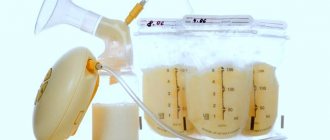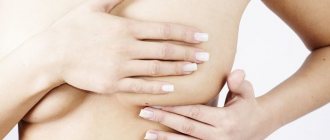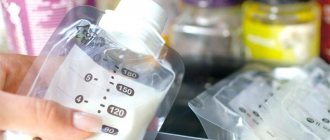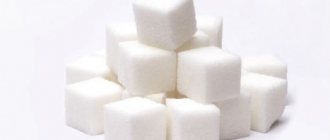08/12/2020 Alena Masheva Health
How is breast milk produced? What is the mechanism and principle of its formation? What is possible and what is not possible when breastfeeding? What you need to know about lactation? How to preserve the beneficial properties of mother's milk? Women often have to find answers to these and many other questions on their own. This means only one thing - it’s time to find out the most relevant and useful information about breastfeeding.
All the benefits of mother's milk
Is it worth talking about how beneficial breast milk is for the harmonious growth and development of a baby? Natural feeding is one of the most important factors for a healthy future baby. A woman must eat properly to provide her child with all the necessary vitamins and nutrients that stimulate its development.
Breastfeeding is especially important in the first months of a child's life. The baby has just been born - this is a lot of stress for a tiny organism. The small ventricle is just beginning its work, so the baby’s food should be maximally adapted to the capabilities of the still fragile organ. And there is nothing better than what was invented by nature itself - mother's milk. In addition, the baby desperately needs physical contact with his mother. Regular breastfeeding at the baby's request is the best way to communicate with the baby, which stimulates the production of mother's milk.
Why should you breastfeed?
Mother's milk is both food and drink. Therefore, you don’t have to give your baby water if he is breastfed (only if it’s very hot). Nature has provided for everything: the composition of mother’s milk, the mechanism of its production, and the very meaning of the process of natural feeding.
Breast milk contains the necessary proteins and fats, essential amino acids and carbohydrates, a wide variety of microelements and vitamins - all this is contained in the right composition and the right quantity. In addition, a nursing woman’s milk also contains leukocytes, which strengthen the small body’s resistance to pathogens and infections. Simply put, mother's milk is a natural antibiotic that strengthens the baby's immune system.
Breast milk is characterized by optimal temperature, sterility and readiness for use at any time. Lactation promotes the formation of a close bond between woman and child. Many people note that regular breastfeeding promotes the emergence of maternal instinct (if it has not yet developed).
When sucking on the breast (soft, pliable and elastic), the baby develops a correct bite and immunity. It is known that breast milk is produced from the blood, which means that the mother’s diet must be complete and balanced.
Features of breast milk
In the first days of life, mother's milk is the only source of food, fluid, everything necessary for normal development and growth. Among the positive qualities of mature milk are:
- A complete source of food and liquid.
- It contains a special type of enzymes that allow the child to accept other foods in the diet in the future.
- When feeding, the hormone oxytocin is released, which relieves stress and makes the child calmer.
- It strengthens the immune system and significantly increases the body's resistance to various pathogenic stimuli. The stem cells contained in the composition cope well with diseases. All useful components are absorbed through the gastric mucosa, penetrate into the blood and enhance the body’s protective functions.
- Used as a medicine for diseases of the eyes or nose as drops.
- Breastfeeding also helps to cope with allergic manifestations, as it has beneficial properties.
Mother's milk fully provides the body with useful nutrients. Such nutrition may be the only one for the first six months or more. Later, bait may be introduced. It's good to understand how breast milk is produced so you can adjust your diet.
How to prepare for lactation?
Before learning how breast milk is produced, it is worth getting acquainted with equally important information on how to prepare the mammary glands for breastfeeding. So, even during pregnancy it is worth paying attention to the shape and size of the nipples. They can be pronounced, flat or even retracted. It should be recalled that the baby sucks directly on the breast itself, and not on the nipple. But still, with the latter’s convenient form, eating will be much easier and more enjoyable. Women who have been blessed by nature with flat or inverted nipples should not be upset - you just need to prepare them for feeding.
You can put special silicone caps on the areolas (the dark-colored area around the nipple) - they have a hole into which the nipple is pulled out. It is recommended to wear this attribute 3-4 weeks before the expected date of birth and 30 minutes before feeding in the first month of the baby’s life. If a woman did not have time to solve her nipple problem before giving birth, she should not despair. Using a breast pump will correct this situation. You shouldn’t worry too much about how long it takes for breast milk to be produced.
Mechanism of breast milk formation
Now it's time to find out how breast milk is produced. To do this you will have to take a look at the human anatomy course. It’s worth finding out how women’s breasts work. Milk is produced directly by the mammary gland itself under the influence of the hormone oxytocin (which is also responsible for the mechanism of contractions during childbirth) and prolactin (its concentration increases when the baby suckles).
These two hormones are produced by the pituitary gland, a specialized gland located in the lower part of the brain. As soon as the concentration of prolactin increases, milk production is stimulated. Oxytocin, in turn, expels the product by contracting the muscles that are located around the cells responsible for milk production. Further along the milk ducts it reaches the nipple and the woman can feel the swelling of the mammary glands.
Many people are interested in how long it takes for breast milk to be produced. The rate of its production depends directly on the degree of emptying of the breast. In a full mammary gland it arrives slowly, while in an empty mammary gland milk production occurs much faster. A strong latch is facilitated by frequent latching of the baby to the breast. Intense activity of the mammary glands is observed in the first 3-4 months of a child’s life. In the future, this process slows down. It is now clear where breast milk is produced. Now you can get acquainted with other, no less interesting, information.
Features of milk formation
A woman’s mammary gland consists of special cavities, the ducts are located between them. In the area of the nipple they expand noticeably, forming lacteal sinuses. On the other side of the ducts are cells that produce milk.
Prolactin is completely responsible for the formation of milk. It begins to form after birth. Even after lactation ends, it persists for another month. When sucking, the muscles contract, moving the milk through the ducts. Production can be divided into several main stages:
- The first few days after childbirth, colostrum is produced. It has a light yellow color. The composition is saturated with antibodies and essential nutrients. Colostrum allows the new body to adapt to a new type of nutrition.
- After this, over the course of one month, another composition is produced. It has a richer composition - saturated with substances necessary for the full growth and development of the baby.
- Mature milk begins to form after a month. There is less protein in the composition, it is more saturated with fats and water.
We recommend reading: Milk crisis during breastfeeding
The formation of breast milk is influenced by the mother's lifestyle and diet.
How does the composition of breast milk change?
Throughout the entire lactation period, its composition changes. This can be seen by its consistency and color. Once you understand how breast milk is produced, you can study its composition and characteristics throughout the entire lactation period.
So, in the first days after childbirth, “colostrum” is produced - a thick and sticky substance of a yellowish tint, which contains immune proteins that are extremely necessary for the formation of strong immunity in the baby. They are needed to adapt the baby’s sterile body to environmental conditions. Colostrum is released in droplets, but even this amount is quite enough to fill the baby.
The so-called transitional milk appears approximately 3-4 days after birth. It is more liquid in consistency, but its composition is practically no different from colostrum.
How does a woman produce breast milk in the future? Around the 3rd week after birth, mature milk moves through the milk ducts to the nipples - it is liquid, white and not as fatty as colostrum. Its composition fully meets the needs of a small organism.
How is breast milk formed and what does it depend on?
How breast milk is produced depends primarily on the woman’s hormonal background. During pregnancy, the body prepares for this process. The mammary glands increase significantly in size as a result of changes in hormone levels, which play an important role in milk production and after childbirth.
Prolactin is responsible for the process of milk formation. This hormone has the highest concentration in a woman’s body 3-5 days after birth, it is at this moment that milk flow occurs. In the future, its level will be adjusted depending on the frequency of the baby's attachment to the breast. Therefore, there is no need to increase the intervals between feedings to store milk. In this case, of course, the breast will overflow with milk, but new milk will be formed more slowly. Don't forget the importance of night feedings, when prolactin is released the most.
Oxytocin is responsible for the release of milk from the breast. The level of oxytocin depends on the activity with which the baby eats milk, and the mood of the nursing mother.
What you need to know about milk?
It consists of almost 90% water, so it’s not worth giving your child extra water (this can only be done in hot weather). Breast milk contains approximately 3-4% fat, but this figure may vary.
At the very beginning of feeding, the so-called foremilk is released, which accumulates around the nipple. It is non-greasy and translucent. We can say that this is water for a child. Hind milk contains much more fat - it enters the baby’s body immediately after the first serving. In the first months of lactation, milk is fattier than that produced in the 5-6th month of a child’s life.
Breast milk contains essential amino acids. There are also immune proteins (about 1%), carbohydrates (about 7%), lactose, white blood cells, as well as essential vitamins and other nutrients.
What does breast milk consist of?
Breast milk is characterized by a sweetish taste. When changing the diet, taste qualities change; a woman must think through her menu thoroughly. It contains a huge amount of nutrients. Includes:
- Water about 90% (this concentration completely replaces additional liquid).
- Carbohydrates 7%.
- Amount of fat 4%.
- Proteins 1%.
- The remainder comes from iron, various vitamins, hormones, white blood cells and antibodies.
There is no stable composition; it changes regularly. Any changes are influenced by:
- Time of day - during the day the consistency is much thicker than at night.
- At elevated ambient temperatures, the consistency becomes liquid, and at lower temperatures it becomes thicker again.
- Taking any medications or spicy foods changes color and taste
- When the baby sucks hard, it becomes thicker.
Every woman can control qualitative and quantitative characteristics. The main thing is to follow a proper diet. It should have everything necessary for full development. You will need to exclude any alcoholic beverages, nicotine, very spicy, salty, or too sweet foods. Eat more foods rich in nutrients. It is better to feed on demand, not by the hour.
Full or hungry?
Sometimes a nursing mother is not at all interested in how a woman produces breast milk. There are things that cause much more interest - is there enough breast milk for the baby? There are certain factors and indicators that will help answer this question.
First of all, new mothers should be reminded that the baby needs to be put to the breast as soon as he wants. This is not difficult to understand: the child whines, sucks his fist, turns his head in different directions (looks for the nipple), and opens his mouth wide. On average this is 11-13 times per day.
In order for the baby to be satisfied, he should be applied to the breast correctly. The baby should suck rhythmically for 5-20 minutes. At this time, characteristic swallowing sounds can be heard. A newborn may fall asleep under the breast - there is nothing to worry about. A hungry child will never be calm. By the way, the baby can suckle at the breast not only when he is hungry - the baby with great pleasure grabs the nipple for calm, comfort, to remove gas, to fall asleep, etc.
If the baby is gaining weight well, is not capricious and meets all development parameters, the mother has nothing to worry about. This means that the baby is eating. Therefore, new mothers should not once again ask themselves the question of how much breast milk should be produced.
Stages of lactation
The production of milk by a nursing mother is a long process and it goes through several stages.
Colostrum.
It is a translucent liquid, the discharge of which you observed during pregnancy, starting at about 7 months. It is colostrum that is fed to the baby in the first days after birth. It improves the child's immunity and prepares his intestines for milk.
Formation of lactation (up to 3 months).
A woman's milk supply occurs 2-5 days after birth, when breast milk appears. The breasts swell, milk may simply flow from the breast, and not only during feeding. The baby is still too small to cope with such volumes, so they resort to pumping. During this period, it is best to feed your baby on demand. Thanks to this, the body itself will establish the process of producing milk in the amount necessary for the baby.
Mature lactation (up to 1.5-2 years).
By this time, both the nursing mother and the baby have already decided on an approximate feeding schedule and milk production occurs in accordance with it. Around the time you would normally feed your baby, your milk lets in. At the stage of mature lactation, there are no longer strong hot flashes, there is no need to worry about this - milk production occurs during the feeding process.
Involution of lactation (after 1.5-2 years)
At this stage, the breasts are no longer overfilled with milk, even if you do not feed the baby for a long time, the rush of milk disappears altogether. The composition of milk differs significantly from the early stages of lactation. Since the child is already eating at a common table, there is little fat and protein in the milk, but immune substances are more concentrated in it.
So how do women produce breast milk? This process is inherent in nature itself. It largely depends on the mood of the nursing mother herself - how much she wants to breastfeed her baby. Take feeding moments as an opportunity to establish close contact with your baby, and they will give you both not only positive emotions, but will also bring undoubted benefits to both the baby and the mother.
How to stimulate lactation?
Everyone knows that breast milk is produced from the blood. Based on this, we can conclude that in order to enhance its production, it is necessary to eat foods that have a lactogenic effect. But many people ask the question of how long it takes for breast milk to be produced. There are some recommendations that will help stimulate the feeding process and sufficient breast milk production:
- As already mentioned, two hormones are responsible for the production of breast milk - prolactin and oxytocin. They are produced when the baby suckles at the breast. This only means that regular latching is the most important condition for stimulating lactation. Nighttime application is necessary first of all, since oxytocin is released especially strongly at night.
- A happy mother means a healthy and calm baby. This condition means that a woman should avoid stressful situations and nervous strain, mental and physical fatigue.
- Constant contact with your baby also increases the production of oxytocin.
- Warm shower and gentle massage of the mammary glands.
- Special teas for nursing mothers (can be bought at the pharmacy).
- Royal jelly is one of the most effective means for better breast milk production.
- Walnuts and honey are natural stimulants. You should only use honey carefully, as it is a fairly strong allergen.
A nursing woman should give up bad habits.
Expressing milk
When studying the question of how long it takes for milk to be produced after eating, it is worth paying attention to such a moment as pumping. In what cases is it necessary? How to do this correctly and why? These and many other questions will be answered right now.
Expression is necessary:
- If you need to feed a sick or premature baby (in the case when the baby cannot breastfeed).
- If you urgently need to leave your child for a while.
- In case of stagnation of milk to prevent the formation of an inflammatory process.
- If there is increased productivity of the mammary glands.
Many women may be hesitant to pump. First of all, they are concerned about how long it takes for milk to be produced. What if a woman pumps her breast, and the baby wakes up and wants to eat? To prevent this from happening, you need to feed the baby well and only then express the remaining milk.
Properties and characteristics
We have already learned where milk is produced. Now you can get acquainted with the properties of this product and its distinctive features.
In addition, natural nutrition prevents the formation of digestive system disorders. Experienced mothers know that breastfed babies suffer much less from colic and other digestive problems.
Many women are concerned about the question of why little breast milk is produced? The answer is very simple: the cause is infrequent breastfeeding. Research has proven that overcrowded breasts significantly slow down milk production. This only means that a sufficient amount of the product will only be achieved by frequently putting the baby to the breast.
What is the connection between a woman's diet and breast milk production?
In fact, the quantity and speed of filling of the mammary glands are in no way related to the nutrition of the nursing mother. Simply put, you don’t need to eat everything in unlimited quantities - this can cause extra pounds, which a new mother has absolutely no need for.
At the same time, diets and other dietary restrictions are strictly prohibited! You need to eat as usual. It is advisable to diversify your diet with more healthy and nutritious foods: more vegetables, fruits and grains. The mother must remember that everything she consumes ends up in the child’s body. Therefore, you should be very careful with products that can cause an allergic reaction.
However, there are some foods that can indirectly affect the quality of breast milk. For example, onions or garlic give baby food a specific aroma. But this does not mean at all that the baby will categorically refuse to eat; it is quite possible that he will like it.
Foremilk and hindmilk
The unique thing about breast milk is that it constantly changes in its composition. What cannot be said about formulas for artificial children. Even during one feeding, milk changes. First, the baby receives foremilk, which has accumulated in the breast while the baby is not eating. It is translucent in appearance and rich in lactose. Thanks to it, the baby can satisfy the body's need for fluid. Gradually, the milk becomes fatter and richer, it already acquires a white or yellowish color. This is hind milk. What does breast milk taste like? Mostly sweetish. Although, of course, it depends on the nutrition of the nursing mother.
Some surprising facts about milk
To stop breast milk production, it is enough to block the production of prolactin and oxytocin. Many people prefer to use special medications for this. However, experts recommend refraining from this - after all, mother's milk is the best nutrition for a baby. In addition, after 6 months of feeding, the intensity of milk production decreases on its own - the baby can already be introduced to complementary foods, so the woman can simply “get dressed.” This is in case she doesn’t know what to do to stop producing breast milk.
And now some fun facts about baby nutrition.
- Daytime breast milk is different from night milk. The latter is fattier and more nutritious. The composition of the product may vary depending on the delivery (natural birth or cesarean section) and even the time of year (milk contains more water in summer than in winter).
- Breast milk is only good for the baby. Mothers often think about what it tastes like and try it. In fact, the products of the mammary glands are useless for the adult body and can even be harmful, since the digestive tract has already learned to process it. Therefore, the now fashionable baking from breast milk is just an advertising ploy.
- There is no need to follow a special diet for a nursing mother. It is enough to remember only how our grandmothers and great-grandmothers fed babies during the war and post-war years. Could they afford an abundance of fruits, fresh vegetables, nuts and grains? Nevertheless, they were able to raise healthy and strong children. Nature has arranged everything in an amazing way: as soon as the first teeth erupt, mother’s milk is somehow miraculously saturated with calcium. And at a time when the baby begins to intensively explore the world around him, mother’s milk will become rich in proteins necessary for the baby.
- The most magical food is colostrum. It is produced in small quantities, but even 2 ml will be enough for a 7 ml stomach. In fact, colostrum is the baby’s first vaccination, as it contains various hormones, beneficial bacteria and antibodies. It is interesting that the composition of colostrum changes throughout the 3 days during which it is produced.
- For those who are wondering how long it takes to produce breast milk, let us tell you that the women's “milk factory” works around the clock.
- A woman can feel the rush of milk - this is a kind of tingling in the chest.
- The size of the mammary gland does not affect the amount of milk in it.
There is another interesting fact: while breastfeeding, a woman does not have periods because oxytocin blocks the ovaries.
Composition of breast milk
Breastfeeding is the best way to naturally raise a healthy baby. With mother's milk, the baby receives all the necessary nutrients, hormones and protective antibodies that control its harmonious development. This is the healthiest food for your baby, which does not contain bacteria, heavy metal salts and allergens, unlike artificial baby food products.
How is breast milk formed and where does it come from in women?
The female breast is a rather complex mechanism. In addition to fat and muscle tissue, it contains special sac cells - alveoli, which seem to adhere to each other, forming clusters. It is from these cells that milk flows through the tubules into the nipple. And milk itself is formed as a result of the action of reflexes and hormones. Even during pregnancy, a woman begins to experience hormonal changes, during which the mammary gland prepares to produce breast milk. At the same time, it begins to develop, and the breasts accordingly begin to increase in size. After the birth of a child, the amount of hormones progesterone and estrogen decreases, and in return the production of prolactin increases, which stimulates the formation of milk in the breast.
Composition of breast milk
The main component of breast milk is ordinary water and its share is about 87%. That is why, when breastfeeding, pediatricians do not recommend supplementing the child with additional food, and due to its biologically active properties, it is easily digestible. Also, breast milk contains approximately 7% carbohydrates, which provide the baby with energy and help in the absorption of nutrients. Fats, which account for about 4%, contribute to the structure of cells, including those of the brain and central nervous system. Breast milk, due to the presence of 1% proteins in it, supports the baby’s immunity and ensures its intensive growth and development. Another very important component is vitamins and microelements, thanks to which the child’s body resists infections.
How does a woman’s breast produce breast milk and what contributes to it?
There is an opinion that the amount of milk produced depends on how much a woman eats, drinks and rests. Of course, these are important factors affecting the quality of breast milk, but they do not affect its quantity. The production of the hormone prolactin, which is responsible for the formation of milk, is activated when the baby begins to suckle. And the more often and longer you put your baby to your breast, the more breast milk will be produced, or rather exactly as much as your baby needs.
Taste and color of breast milk
There are several factors that affect the taste of breast milk:
- diet of a nursing woman - if a young mother is fond of salty, spicy or smoked foods, this may affect the taste of breast milk;
- emotional and physical state of the mother;
- use of medications;
- bad habits - of course, smoking or drinking alcohol affects not only the taste of milk, but also the health of the child as a whole.
It is no secret that the color of breast milk depends on its fat content. Moreover, its composition changes during one feeding. First, the baby sucks out the “front” milk, which is more watery, has a bluish tint and is completely satisfying for the baby to drink. Next, the baby receives the so-called “hind” milk, which has a higher fat content and therefore is thicker and white in color. This, in turn, makes the baby feel satisfied with hunger.
Remember, there is no answer to the question of what breast milk should be like. And your milk is the best and most necessary in the world for your child.
Truth or myth?
Mothers, grandmothers, great-grandmothers and other “more experienced mothers” love to teach and give advice to new parents on what and how to do correctly. This is especially true for breastfeeding. So, there is an opinion that nuts, tea with condensed milk and even dill water literally stimulate the strongest production of breast milk. Actually this is not true. The intensity of the stay in the breast directly depends on the frequency of the baby's attachment to the breast and the degree of its emptiness.
Consider some more common myths about lactation.
- About allergies and products that provoke them. Everyone from everywhere is saying that a nursing woman should carefully review her diet. The ban includes bread, “colored” vegetables and fruits, cabbage, chocolate, nuts, honey, etc. Here it is necessary to set a clear boundary between two concepts: food intolerance and allergies.
- Lots of water - lots of milk. This is another myth that has no scientific basis. Let us remind you again - only frequent latching of the baby to the breast.
- Dangerous products. We are talking about the notorious citrus fruits, chocolate and berries, which allegedly can provoke an allergic reaction. Breast milk contains special antibodies that block allergens. But a special “anti-allergenic diet” is a direct way to feed a child who is more susceptible to allergies.
- There are special medications that increase the quantity and improve the quality of breast milk. This is another common but unproven belief. Just another marketing ploy - that's all. It is much cheaper and more reliable to use homemade teas and herbal infusions (you just need to do this with extreme caution).
Breastfeeding mothers will probably be interested in how food gets into the baby's food and how quickly breast milk is produced after eating. It is worth considering this issue in more detail.











